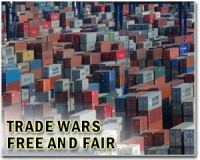| . |  |
. |
Sydney (AFP) Nov 17, 2010 Global demand for the increasingly important "rare earth" minerals that power a range of digital products could outstrip supply by next year as dominant producer China slashes exports, analysts warn. Australian experts say the world must find new technologies or prioritise use of the glowing or highly magnetic metals behind iPhones and flat-screen TVs, as well as eco-friendly hybrid cars, solar panels and wind turbines. "We have a classic supply and demand crisis. Under normal conditions the global demand exceeds supply in about 2011," Professor Brent McInnes from Curtin University in Western Australia told an online briefing last week. "In 2016, it's quite evident that the Chinese demand itself will exceed the global supply of rare earth elements." Demand for rare earths has soared with the popularity of smartphones and low-power light bulbs, at the same time that China, which produces 95 percent of the world's total, is limiting exports to feed its domestic market. Trade tensions flared in September when buyers in Japan accused China of a targeted embargo in retaliation for a territorial dispute. China gave assurances it would be a "reliable supplier" during a visit by US Secretary of State Hillary Clinton last month. But Japan, the United States and other top consumers are scrambling to find new sources. "There is a whole range of economies out there... that are building high-tech industries that are dependent at the moment on a very narrow source," said John Cole, director of the Australian Centre for Sustainable Business and Development. But McInnes said China's actions were driven more by a need to support its growing high-tech sector rather than a desire to exert market clout. "China sees a point in time when they will need all the rare earth elements they produce," he said. Rare earth prices remained static for decades due to plentiful supplies, lulling the high-tech industry into a false sense of security. But McInnes said "it's quite evident this is no longer going to be viable," with a 300 percent spike in prices over the past year alone. "In normal economic circumstances, whenever the price of an element gets so high, you look to develop new technologies that don't need that element, or you find a new element that is more abundant," said McInnes. Dwindling supply and increasing costs underscored the need to develop alternatives such as bio- or nano-technology, he added. "We are at the moment looking at a phenomenon that perhaps gives us some insights into where the future might be in terms of the high-tech and particularly the green-tech sector because some of the technologies that are at risk ... largely exist in the green-tech area," McInnes said. Cole said scarce supplies of rare earths were being routinely used on "low-value" applications such as plasma screen TVs, indicating a lack of appreciation of the resource and its potential applications. "Health, defence, and communications applications indicate that there are "a hierarchy of technologies here that could be developed, not least of which are the green technologies," said Cole. With an average Australian producing six kilos (12 pounds) of electronic waste each year, vast quantities of rare earth -- also used in glass, fibre optic cables and magnets -- find their way into rubbish tips, raising the possibility of recycling as a key source of the minerals. "The optimisation of our use of rare earth demands that we fully recover the material and re-use it, and that includes even going to the extent of land-fill mining," said Cole. Australia's Lynas Corp is on track to start producing rare earths by the third quarter of next year, with the resource-rich country expected to become one of the world's leading producers within just a few years.
Share This Article With Planet Earth
Related Links Global Trade News
 Argentina, China bury the trade war hatchet
Argentina, China bury the trade war hatchetBuenos Aires (AFP) Nov 15, 2010 President Cristina Kirchner and China's visiting Agriculture Minister Han Changfu met Monday, formally ending a six month trade war that threatened Argentina's standing as the world's leading soybean oil exporter. "Argentina is a great agricultural power and strategic partner. We're interested in boosting our mutual bilateral relation with Argentine businessmen," Han told the Chamber of Comm ... read more |
|
| The content herein, unless otherwise known to be public domain, are Copyright 1995-2010 - SpaceDaily. AFP and UPI Wire Stories are copyright Agence France-Presse and United Press International. ESA Portal Reports are copyright European Space Agency. All NASA sourced material is public domain. Additional copyrights may apply in whole or part to other bona fide parties. Advertising does not imply endorsement,agreement or approval of any opinions, statements or information provided by SpaceDaily on any Web page published or hosted by SpaceDaily. Privacy Statement |